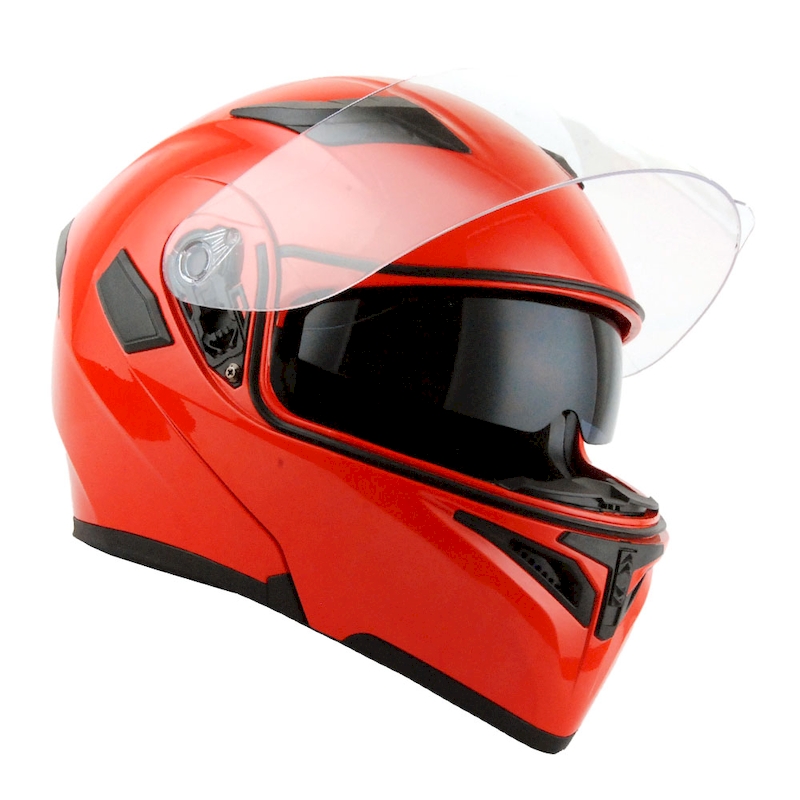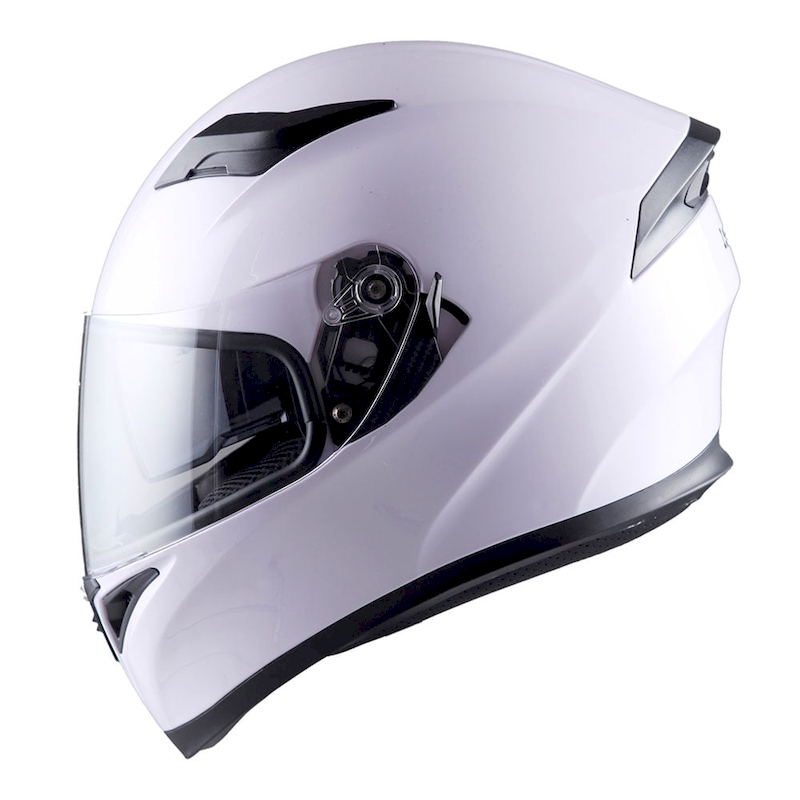Motorcycle helmets are fundamental to ensuring rider safety while hitting the open road. With the excitement of riding comes the inherent risks associated with motorcycle journeys. Wearing a helmet is not only a legal requirement in many regions, but it is also a critical factor in reducing the severity of injuries in the unfortunate event of an accident. The market offers a plethora of options, ranging from full-face helmets to half helmets, each providing different levels of safety and comfort. Understanding the various types available, their safety features, and how to properly maintain a helmet can enhance the overall riding experience significantly. This article will explore the essential aspects of motorcycle helmets, including their types, safety standards, how to choose the right size, and best practices for maintenance to help ensure your helmet remains effective for many rides.

The Importance of Motorcycle Helmets
Motorcycle helmets are more than just a fashionable accessory; they are a necessary component for anyone who rides a motorcycle. Over the years, studies have consistently demonstrated the effectiveness of helmet use in preventing severe injuries and fatalities. A well-fitted, high-quality motorcycle helmet can be a lifesaving piece of safety equipment.
Protecting Against Serious Head Injuries
Motorcyclists are at a significantly higher risk of head injuries compared to those traveling in enclosed vehicles. When an accident occurs—whether due to losing control of the bike, colliding with another vehicle, or encountering road hazards—wearing a helmet can reduce the risk of fatal head injuries significantly. Research suggests that helmets can reduce the risk of head injury by up to 70%. With such statistics emphasizing the critical role helmets play, it’s evident that no rider should ever forgo this vital protective gear.
Legal Requirements
In many regions, the law mandates that riders wear helmets. Helmet laws may vary from state to state or country to country, with some laws applying to all riders and others only to specific age groups. Riders should familiarize themselves with local regulations to remain compliant and avoid potential fines. Complying with these regulations not only demonstrates responsible riding practices but also supports the overall culture of safety within the motorcycling community.
Comfort and Enhanced Riding Experience
Modern motorcycle helmets are engineered to promote comfort in addition to safety. Features such as ventilation systems, noise reduction, and cushioned interiors contribute to a more pleasant riding experience. Riders can enjoy long journeys while remaining comfortable, which ultimately leads to safer rides.
Types of Motorcycle Helmets
When selecting a motorcycle helmet, understanding the various types available is essential for making the right choice. Each helmet type has its own set of advantages and considerations.
Full-Face Helmets
Full-face helmets provide maximum protection by covering the entire head, including the face. They come with a chin bar and a visor to shield against wind, debris, and rain. Riders favor full-face helmets for their robust protection and noise reduction, which are excellent features for those commuting or riding on highways. Moreover, the aerodynamic design reduces drag, enhancing overall performance. These helmets often include innovative features such as internal sun visors, ventilation systems, and padded liners for added comfort.
Modular Helmets
Modular helmets, also known as flip-up helmets, give riders the flexibility to lift the front section. This feature makes it convenient for riders to communicate with others without removing the helmet entirely. While they offer a combination of full-face and open-face protection, it is essential to ensure the helmet meets safety standards when closed. Modular helmets are a popular choice for touring riders who appreciate both convenience and safety.
Open-Face Helmets
Open-face helmets cover the top, back, and sides of the head but leave the face exposed. Riders often choose this style for better visibility and airflow, making it an ideal option for short trips or leisurely rides. While the design allows for a classic look and more freedom, it may also present increased risks; injuries to the face can occur without the protection of a chin bar.
Half Helmets
Half helmets offer minimal coverage, protecting only the top of the head. These helmets are lightweight and provide a sense of freedom, which some riders prefer. However, they lack significant safety features and are generally recommended for short, low-speed rides rather than extended journeys.
Specialty Helmets
In addition to standard helmet types, specialty helmets cater to specific activities or riding styles. For example, dirt bike helmets often design added ventilation and feature visors for off-road riding conditions. Riders should assess their unique requirements and preferences when selecting specialty helmets, ensuring that they are appropriate for their riding context.
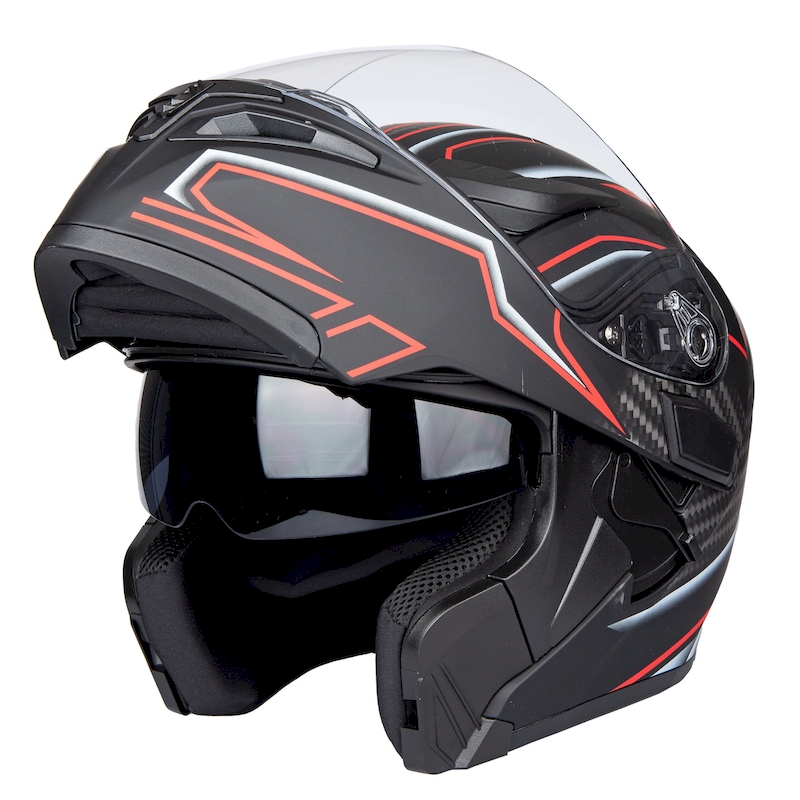
Safety Standards and Ratings
Selecting a motorcycle helmet that meets established safety standards is crucial for ensuring rider protection. Understanding safety ratings helps riders make informed choices about their gear.
DOT Certification
In the United States, the Department of Transportation (DOT) sets minimum safety standards for motorcycle helmets. DOT-certified helmets undergo rigorous testing to ensure they withstand impact and resist penetration. When purchasing helmets, riders should look for the DOT sticker, which indicates that the helmet meets federal safety requirements.
Snell Certification
Snell certification offers an additional layer of testing beyond DOT standards. Helmets that meet Snell’s more stringent requirements demonstrate higher levels of impact resistance and performance in real-world scenarios. Many seasoned riders prefer Snell-certified helmets for this reason, as these helmets typically provide superior protection.
ECE Certification
In Europe, the Economic Commission for Europe (ECE) provides safety certification for motorcycle helmets. ECE-certified helmets undergo rigorous testing procedures that assess their impact resistance and other essential safety factors. Riders should pay attention to the ECE label, especially if they travel internationally or use their helmets in European countries.
Why Safety Ratings Matter
Safety ratings are essential indicators of helmet quality and effectiveness. When choosing a motorcycle helmet, riders must prioritize helmets that display relevant safety certifications. Employing helmets that meet established guidelines can increase safety on the road, offering valuable peace of mind to riders.
Finding the Perfect Fit
Finding a helmet with the right size and fit is crucial for both comfort and safety. An improperly fitted helmet can compromise effectiveness and lead to discomfort during rides.
Measuring Your Head
To determine the correct helmet size, measure the circumference of your head just above the eyebrows and around the widest part of your head. Use a flexible measuring tape for accuracy. Once you’ve gathered the measurement, refer to the manufacturer’s sizing chart to find the corresponding size.
Trying on Helmets
After determining your size, it’s essential to try on multiple helmets—especially different styles—to find the one that feels best. Helmets should fit snugly without pressing uncomfortably against pressure points. Ensure the helmet sits level on your head; it should not obstruct your vision or shake when you turn your head.
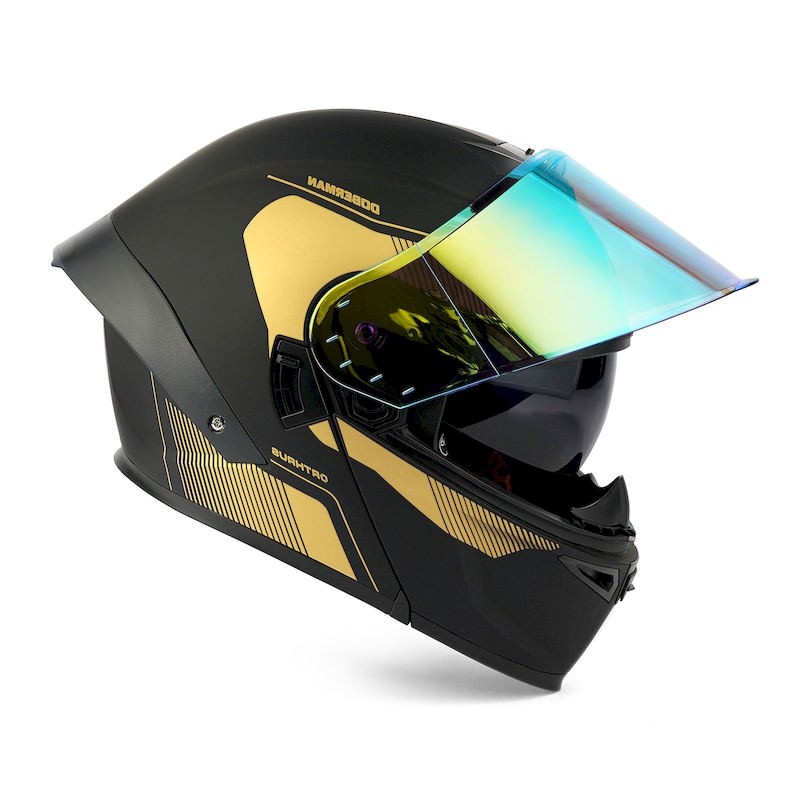
Fit Adjustments
Once you’ve found a helmet that feels right, secure it with the chin strap to ensure stability. The chin strap should be snug but allow for some finger space. Adjust the fit tabs or padding as necessary to achieve a more personalized fit that enhances comfort while keeping you safe.
Maintenance for Motorcycle Helmets
Proper maintenance of your motorcycle helmet is essential for ensuring its longevity and effectiveness. Neglecting upkeep can lead to safety issues over time.
Regular Cleaning
Clean your helmet regularly to maintain hygiene and overall performance. Use mild soap with a damp cloth to wipe down the outer shell. Avoid abrasives or harsh chemicals that could damage the helmet’s surface. For the visor, gentle cleaning solutions designed for plastics will help prevent scratches.
Inspecting for Damage
Routine inspections are vital to keeping your helmet in top condition. Check for visible damage, such as cracks, dents, or shattered areas. Examine the straps and padding for any signs of wear. If you detect significant damage, it’s best to replace the helmet to ensure reliability.
Proper Storage
When not in use, store your helmet in a cool, dry place away from direct sunlight. As UV rays degrade materials over time, using a padded helmet bag for storage can help protect it from dust and impacts.
Avoiding Modifications
Modifying your helmet is not recommended. Altering its structure, such as drilling holes for communication systems or other adjustments, can compromise safety. Always use a helmet as intended, as design alterations can lead to reduced protective capability.
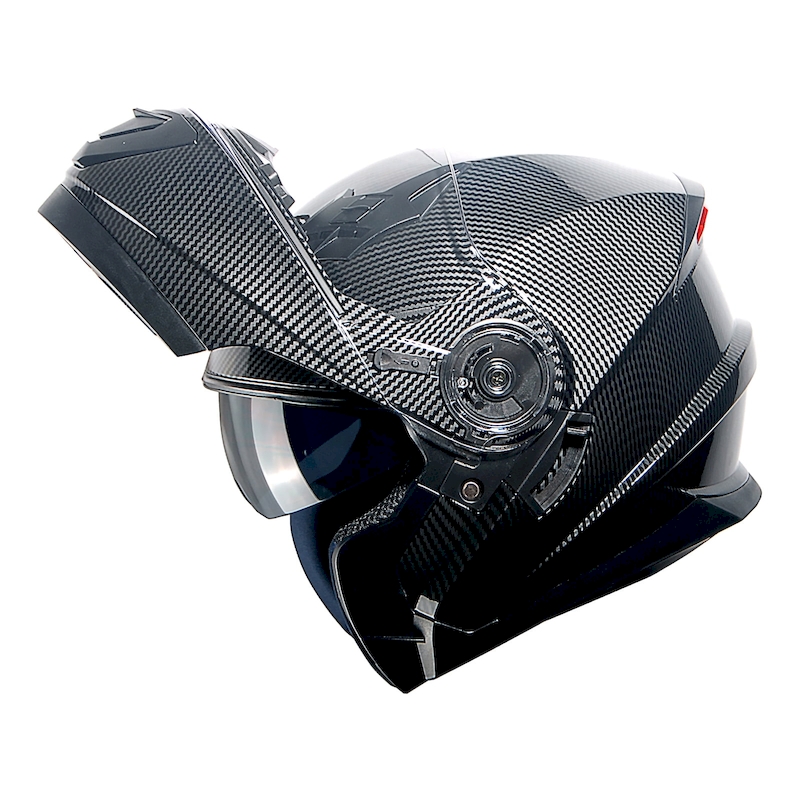
Addressing Common Issues and Concerns
Even with the best helmets, riders may encounter common issues. Recognizing these challenges and effectively troubleshooting them can improve the overall riding experience.
Fit and Comfort Troubles
If your helmet feels uncomfortable during rides, reassess your size and fit. Different brands or styles may offer various fits, so don’t hesitate to explore multiple options. Trying helmets in-store also allows you to gauge comfort better in real-time.
Noise Discomfort
Wind noise can affect the enjoyment of riding, especially over long distances. To minimize noise, look for helmets designed with acoustics in mind. Checking that the visor is securely attached can also help some models reduce excess noise during rides.
Odor Control
Over time, sweat and moisture can lead to unpleasant odors inside your helmet. Regularly cleaning the interior lining will help maintain hygiene and freshness. Consider using helmet deodorizers specifically designed for this purpose to keep the interior smelling pleasant.
Damage Evaluation
After an accident, careful inspection of your helmet for any signs of damage is critical. Even minor falls can compromise structural integrity. If you’re unsure whether it’s still safe to wear, consult a professional for advice or consider replacing it altogether.
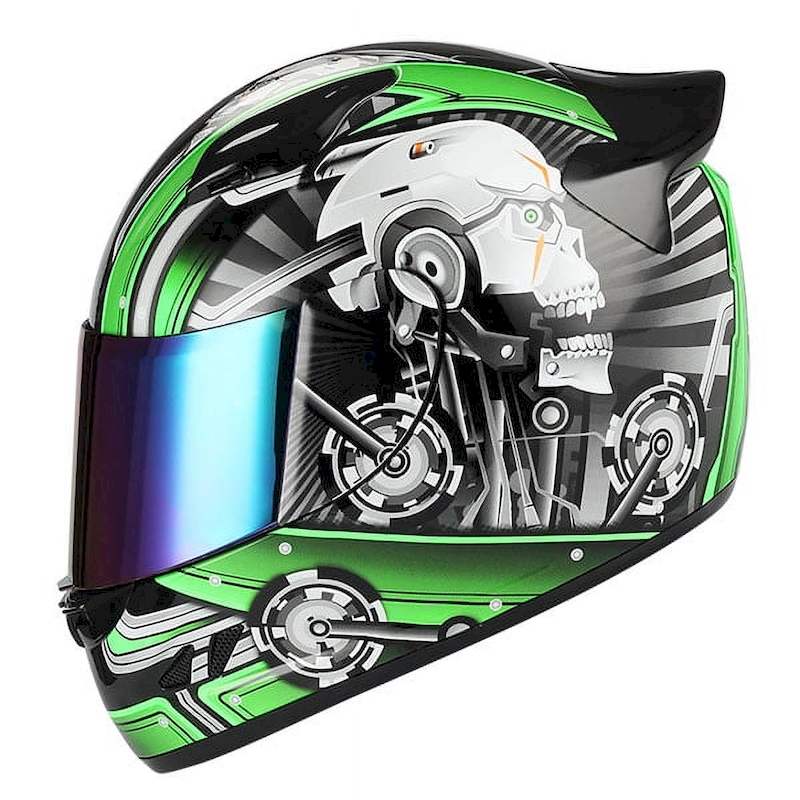
Conclusion
In conclusion, motorcycle helmets are indispensable in ensuring safety for riders on the road. They provide critical protection against the potential risks associated with motorcycle riding, making it essential to prioritize helmet use at all times. Understanding the different types of helmets available, assessing their safety ratings, ensuring a proper fit, and maintaining them consistently can significantly enhance both safety and comfort.
As you develop your motorcycle knowledge, remember that investing in a quality helmet is one of the most effective ways to reduce the risk of injury while riding. Whether you’re commuting, touring, or simply enjoying a leisurely ride, the right helmet can be a game-changer.
By adopting a proactive approach towards helmet care and addressing potential issues quickly, you can prolong the helmet’s lifespan and ensure it continues to provide maximum protection. So gear up properly for every ride, stay safe, and enjoy the freedom that comes with motorcycling.
